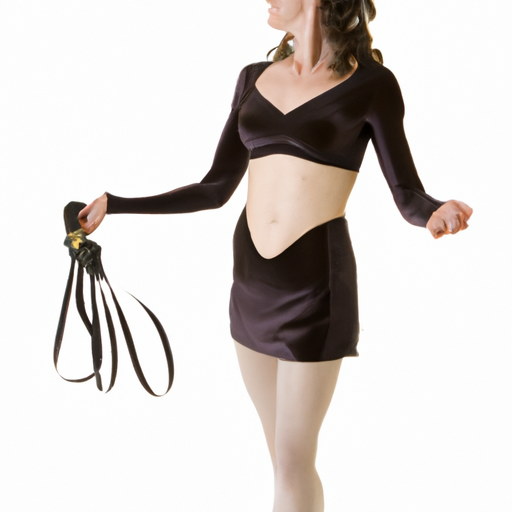In the realm of BDSM relationships, power dynamics play a vital role, creating a unique and consensual exchange of power between partners. One symbol that often represents this power dynamic is the bdsm collar. The ownership aspect of a BDSM collar can significantly impact these power dynamics, shaping the relationship and the roles of the individuals involved.

BDSM collars are not merely fashion accessories; they hold a profound symbolic meaning within the BDSM community. The collar is a physical representation of the power exchange between the dominant and submissive partners. It serves as a constant reminder of the roles and responsibilities each partner has agreed upon. The act of putting on a collar signifies the transfer of power from the submissive to the dominant, establishing a framework for the relationship.
Ownership, within the context of a BDSM collar, is not about objectification or dehumanization. Instead, it is a consensual agreement between partners to explore and embrace power dynamics that fulfill their desires and needs. It is important to emphasize that BDSM relationships are built on trust, communication, and mutual respect. The ownership aspect of a collar is a symbolic representation of the trust and commitment between partners.
For the submissive partner, wearing a collar can be a liberating experience. It allows them to surrender control and find solace in their role. The collar serves as a reminder of the trust they have placed in their dominant partner, creating a sense of security within the power dynamic. It provides a clear distinction between their everyday life and their BDSM dynamic, allowing them to fully embrace their submissive nature.
On the other hand, the dominant partner assumes the responsibility of the collar’s ownership. It signifies their commitment to guiding and protecting their submissive partner. The collar serves as a reminder of the power they hold and the trust their submissive has placed in them. It is a symbol of their authority and their commitment to nurturing and supporting their submissive’s needs.
It is crucial to note that the ownership aspect of a collar does not imply abusive or non-consensual behavior. BDSM relationships are founded on open communication and the establishment of boundaries. The collar is a tangible representation of the boundaries and limits that have been agreed upon, ensuring the well-being and safety of both partners.
The power dynamics within a BDSM relationship are not static; they evolve and adapt to the needs and desires of the individuals involved. The collar serves as a constant reminder of the fluidity of power within the relationship. It is a symbol that can be worn or removed, signaling the shifting dynamics and the renegotiation of roles.
In conclusion, the ownership aspect of a BDSM collar is a significant element of power dynamics within a BDSM relationship. It represents trust, commitment, and the consensual exchange of power between partners. The collar serves as a symbol of the roles and responsibilities each partner has agreed upon, fostering a sense of security and fulfillment within the power dynamic. However, it is essential to remember that BDSM relationships are built on trust, communication, and mutual respect, and the collar is a tangible representation of these core values. Click here to find out more.
Are there any specific outfits or attire associated with femdom?
In the realm of alternative lifestyles and BDSM, one particular subculture that has gained attention is femdom, short for female dominance. Femdom is an expression of power dynamics in which women take on dominant roles, both in and out of the bedroom. With the rise in popularity of femdom, many people are curious about the specific outfits or attire associated with this lifestyle. In this blog post, we will explore the various aspects of femdom fashion and delve into the ethical considerations surrounding it.

First and foremost, it is important to understand that femdom is a diverse and multifaceted community with no rigid dress code. Just as with any other subculture, individuals within femdom express their dominance and sexuality through a range of personal styles and preferences. However, there are certain common elements and themes that are often associated with femdom attire.
One common outfit that is often associated with femdom is the dominatrix ensemble. This typically includes a tight-fitting corset or leather bodysuit, along with thigh-high boots, fishnet stockings, and various accessories such as collars, whips, and handcuffs. These outfits evoke a sense of power and authority, allowing the dominatrix to establish control over her submissive partner.
While these outfits may be visually striking and symbolic of dominance, it is crucial to remember that consent and communication are the foundation of any healthy BDSM relationship. It is essential for both partners to establish clear boundaries, discuss limits, and ensure that all activities are consensual. Consent should never be assumed based on someone’s attire.
In the femdom community, emphasis is often placed on the psychological aspects of dominance, rather than solely on physical appearance. This means that the power dynamics and control exerted by a dominant partner can be achieved through various means, including verbal communication, body language, and emotional manipulation. Therefore, it is important to recognize that the true essence of femdom lies in the power dynamics and not merely in the attire worn.
When discussing the ethics of femdom attire, it is essential to address the potential for objectification and the perpetuation of harmful stereotypes. It is crucial to understand that femdom is a consensual and negotiated power exchange between adults. However, it is equally important to ensure that the portrayal of femdom in popular culture and media does not reinforce harmful stereotypes or promote non-consensual power dynamics.
In conclusion, the specific outfits or attire associated with femdom are diverse and varied, reflecting the individual preferences of those within the community. While dominatrix ensembles are often seen as symbolic of femdom, it is crucial to remember that true dominance lies in the power dynamics and not solely in physical appearance. Consent, communication, and the establishment of clear boundaries are paramount within the femdom community. As with any alternative lifestyle, it is crucial to approach femdom with an open mind, respect, and a commitment to ethical practices.
